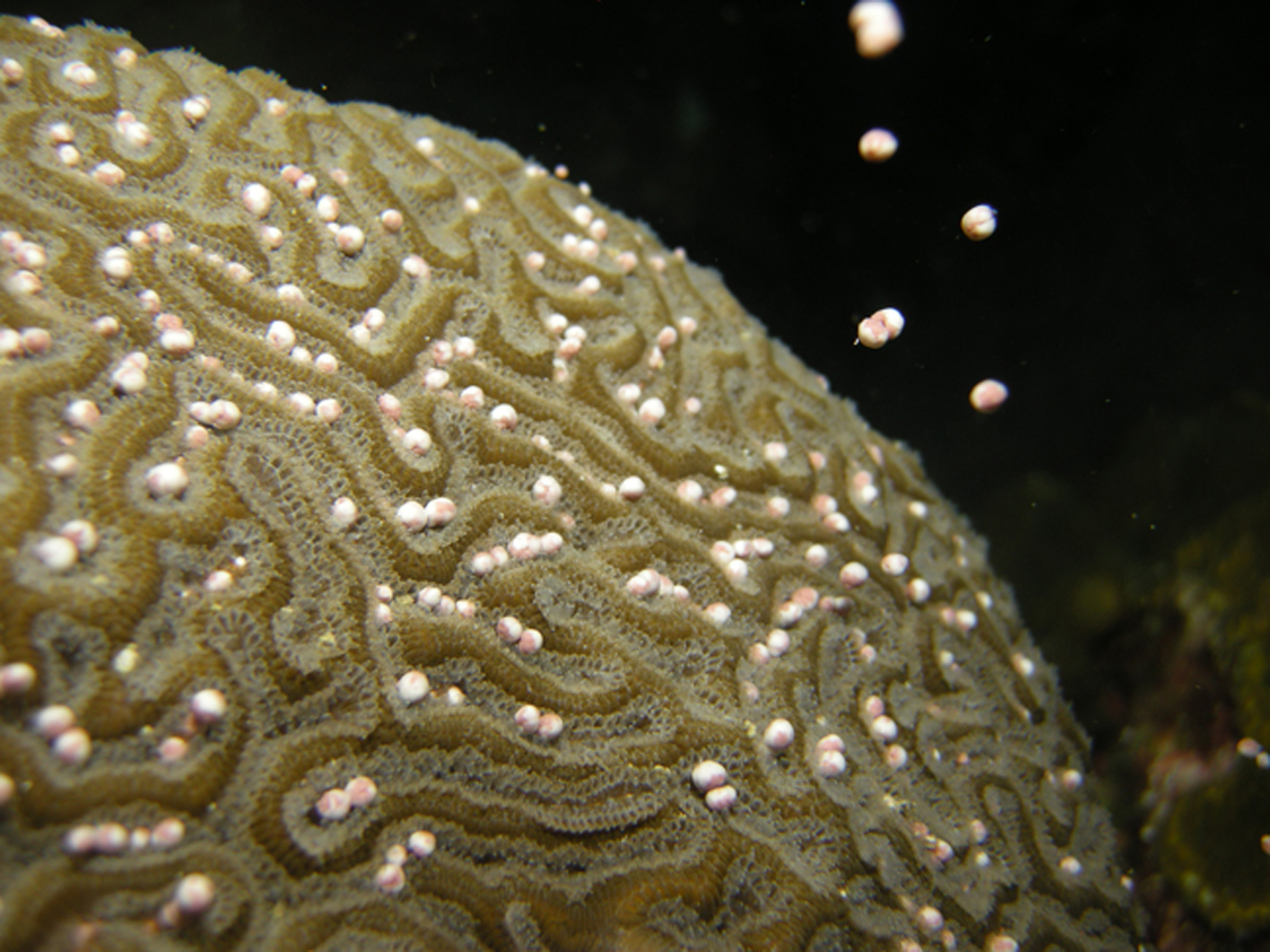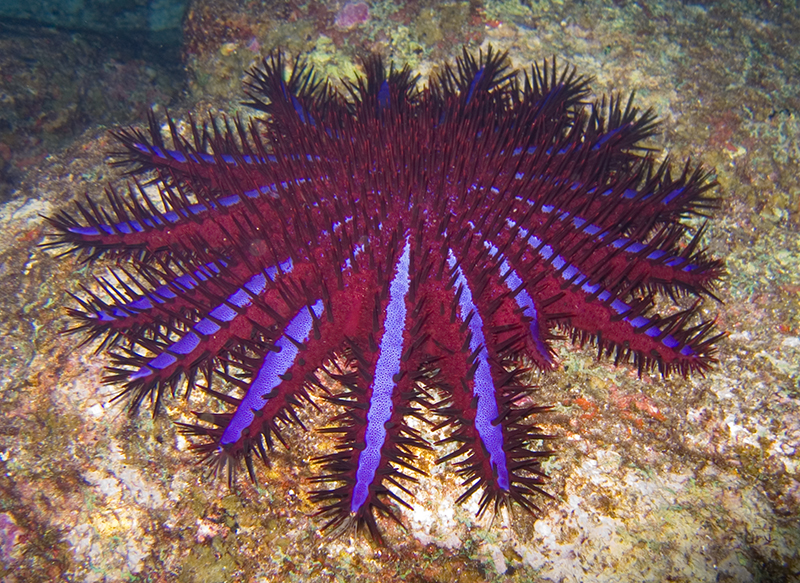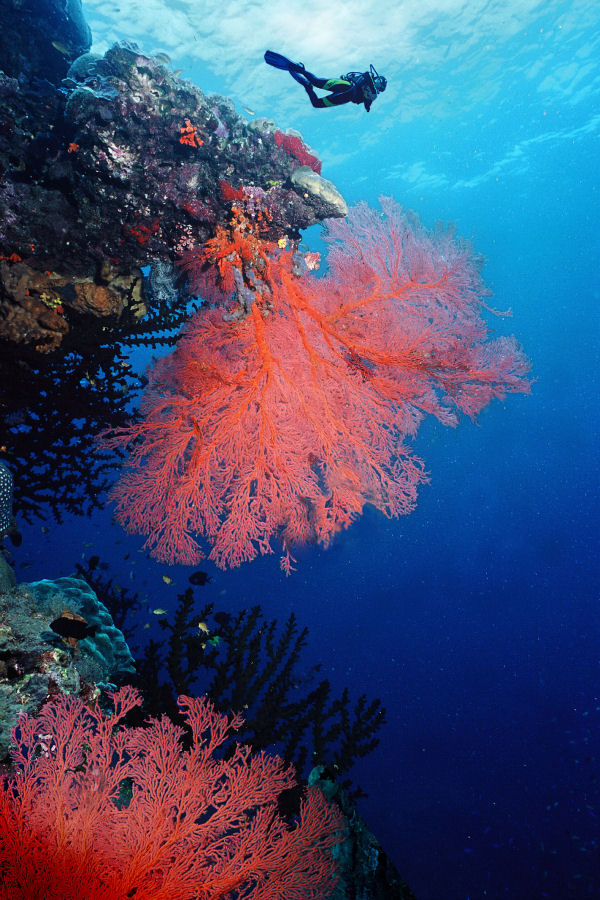
Corals are the primary organisms that make up the Great Barrier Reef. These are the basis for the great variety of sea and animal life in the Reef. Coral consists of individual coral polyps - tiny live creatures which join together to form colonies. Each polyp lives inside a shell made of aragonite, a type of calcium carbonate which is the hard shell that we recognize as coral. The polyps join together to create forests of colored coral in interesting fan, antler, brain and plate shapes.
They reproduce in two ways: asexually and sexually. Some corals divide to form new individuals. This is known as asexual reproduction. Sexual reproduction takes place as mass spawning, where polyps release millions of eggs and sperm. Polyps are either male or female or both male and female. After the eggs and sperm are released, they float to the surface. The fertilized eggs that escape being eaten by other animals, hatch into larvae. The tiny percent that survive and settle on the reef then begin new coral colonies.

Above: Crown-of-Thorns Sea Star
Corals in the Great Barrier Reef face threats from many predators. One such predator is the Crown-of-Thorns Seastar. This organism causes terrible damage to the coral reefs by predating on and killing corals in great numbers. Research has indicated that the Crown-of-Thorns Seastar is only found in this habitat and is a native species to Australian waters. The role that the sea star plays by eating coral polyps forms a population control, making more room for new coral reefs to form.
The ideal environment for coral is shallow warm water where there is a lot of water movement, plenty of light, where the water is salty and low in nutrients. There are many different types of coral, some are slow growing and live to be hundreds of years old, others are faster growing. The colors of coral are created by algae. Only live coral is colored. Dead coral is white.
There are about 350 different types in the Great Barrier Reef. Some of the common coral species are listed as follows:
STAGHORN CORAL
One of the most common types of hard coral found in the Great Barrier Reef is the Staghorn coral. It grows in the form of a deer's antlers and can grow up to four inches or ten centimeters a year, which is very fast for coral to grow. Many small fish may on the staghorn coral for protection.
Staghorn coral is a favorite place for fish and when they are disturbed they all duck inside the coral branches for protection (as seen in the pictures below).


FAN CORAL or THE GORGONIAN
The Gorgonian or Fan Coral is also a very common type of soft coral found in the Great Barrier Reef. Soft corals are beautiful members of reef communities which differ from reef-building corals in the absence of a solid, fused skeleton and hence are flexible like a plant. The fans are formed by the coral polyps building on top of each other in a vertical formation. The growth of the fan is very dependant on the temperatures and current of the water. The bigger and more flexible of the fans are found in areas with consistent currents while stiffer shorter species are found in calmer areas. They come in a huge range of bright colours that are usually associated with poisonous chemicals that are designed to discourage predation by fish. Fish, snails and crustaceans are just some of the animals that eat these coral. Many fan corals produce chemicals in their tissues that make them distasteful or even poisonous to those animals like fish that might want to take a bite.
